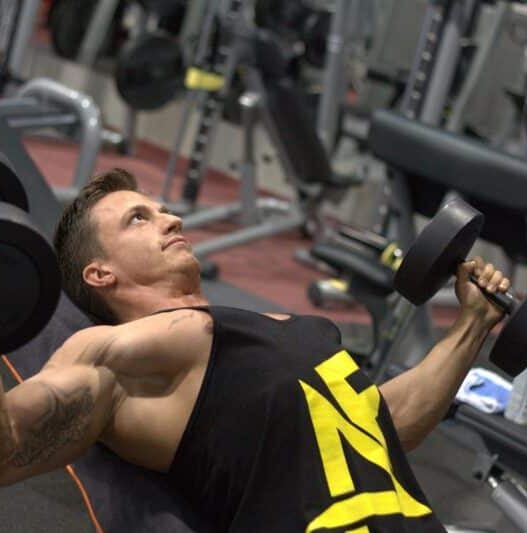Periodization and Athletic Performance
What is periodization and how does this concept help athletic performance? Periodization first came into the concept by Russian Coaches in the early 1950s and later L.P. Martveyev came up with this idea in 1965.
The purpose of a traditional periodization method was to involve the planning of training over a given year (macrocycle). The former Soviet Union had great success with this concept from the 1950s through the 1970s but some of the methods have been outdated and should be overlooked by coaches and athletes. For example, in the running events, no endurance athlete follows a traditional periodization approach, they usually cycle volume and intensity throughout the course of each year to gain their best possible performance.
There are some advantages to training with a linear periodization approach, for example, young athletes who are not experienced can benefit from such a concept. The idea of this concept is for young athletes to gradually increase their volume and intensity over a three to four-week block (mesocycle). By performing this tactic, these individuals will gradually adapt to the training that is being presented to them. Approaching this method can also greatly benefit their long-term athletic performance and development.
Linear periodization to increase athletic performance –
An endurance athlete who wants to increase their athletic performance and volume of their running during their off-season can follow the following weekly schedule:
Week One Week Two Week Three Week Four Week Five
30 MPW 30 MPW 36 MPW 36 MPW 40 MPW
As you can see from the schedule above, the volume of running is being increased by two percent every two weeks.
The same can be applied to our strength training as well:
Barbell Back Squat (5 sets of 5 reps)
Week One Week Two Week Three Week Four Week Five
120lbs 120lbs 125lbs 125lbs 130lbs
As you can see from the schedule above, the weight is being increased by five pounds every two weeks while keeping the sets and the reps consistent throughout the entire training cycle.
The experienced athletes on the other hand would not benefit from this concept due to their competition schedule. These individuals would be better off using an undulating periodization (non-linear) technique where this concept would vary volume and intensity over a given period.
Many coaches have adapted to this system. Hungarian coach Mihaly Igloi was one of those coaches who used this concept to peak his athletes for optimal performance. As opposed to the traditional endurance style of training where the individual would gradually increase his volume over a given period, Igloi used interval training to work both the aerobic and anaerobic development of the endurance runner on a year-round basis. The concept of his training was that he used short intervals so that his athletes can recover from the sessions very quickly but the volume of work would usually be anywhere from 10k to 20k worth of quality training.
Igloi’s session of Periodization to increase athletic performance
An example of an Igloi’s session to increase athletic performance is as given below:
12*400m (4 fresh/ 6 good/ 2 hard) 100m walk in between each 400m interval.
Followed by 400m jog and then complete -
8*200m (2 fresh/ 4 good/ 2 hard) 100m walk in between each 200m.
He would use the concept of fresh, good, and hard. The terminology behind the concept of fresh is to (run by moderate effort), whereas good (interval is run seventy-five percent effort), and hard (interval is run at full effort). The paces of this specific workout above would vary throughout the year but Igloi’s idea was to introduce quality aerobic endurance early in the training cycle so that way his athletes can peak properly for the important competitions.
British Coach Frank Horwill has used a similar concept like Igloi but unlike Igloi, he would increase the distance of his quality intervals over a given period. He believed that his athletes should work at varied paces over a given period.
An example would be as follows:
Week One
Monday – Recovery (no training)
Tuesday – 12*400m @3k pace with equal recovery in between. For example, if you were to run a 68-sec tempo per 400m please take 68-sec recovery in between.
Wednesday – 6 miles at an easy effort
Thursday – 2*15 min tempo on the roads or a trail slower than 10k pace with a 3 min recovery jog in between.
Friday – 6 miles easy
Saturday – 3* mile @ 5k pace, take about 400m jog or 3 min recovery in between sessions. Gradually reduce the recovery to 200m jog or a two min recovery.
Sunday – 6 miles easy.
Week Two –
Monday – 2*2 mile @10k race pace, take about 400m jog or 3 min recovery in between sessions. Gradually reduce the recovery to 200m jog or a two min recovery.
Tuesday – 6 miles easy
Wednesday – 10* 60 sec hill sprints, please take a recovery jog on your way down the hill.
Thursday – 6 miles easy
Friday – Progressive Interval Workout:
Mile@ 5k pace / followed by 2*800m @ 3k race pace / followed by 4*400m @ mile race pace. Please take a 400m jog in between each interval.
Saturday – 10 miles easy.
Sunday – Recovery (no training)
As you can see from the schedule above the paces vary on the given course of each week. This allows the athlete to keep themselves fresh and avoid burnout.
These methods can also apply to resistance training as well. For example, an individual can complete a goblet squat followed by a squat jump. This concept is known as a superset, where you are combining two different exercises simultaneously.
Superset Session & Periodization
An example of a superset session is as given below:
Single Leg Suitcase Split Squats with 50lb dumbbells @ 3/0/1 tempo.
Note: three sec eccentric/ zero-second isometric/ 1 second concentric
Followed by –
Split Squat Jumps
Dumbbell Bench Press
Followed by –
Explosive Push-Up
You can also vary the volume and intensity of these exercises during undulating periodization phase. For example, you can perform a heavy resistance training session on one day while on the other day you can perform a circuit workout with just a medicine ball or body weight. Below is an example of this type session:
Monday
1) Split Squat @85 1RM ( 5*5 reps)
2) Deadlift @85 1RM ( 5*5 reps)
3) Dumbbell Bench Press @85 1RM ( 5*5 reps)
4) Bent Over Row @85 1RM ( 5*5 reps)
Wednesday
Circuit Workout –
1) Push-ups
2) Pull-Ups
3) Face Pulls
4) Single Leg Body Weight Squat
5) Single Leg Deadlift (Body Weight)
6) Hollow Body Crunches
7) Back Extensions
8) Side Plank with Hip Abduction
Please repeat the circuit again and move quickly from station to station without sacrificing good technique and take a three min recovery in between the circuit exercises.
The following program is interesting because it combines both high levels of maximal strength on one day while targeting aerobic-specific endurance on the other day. Using this training concept will allow building both maximal strength and aerobic endurance at the same time
During the undulating periodization phase, it is also encouraged that athletes engage in some sort of competition at least once a month. By participating in races or events the athlete could easily monitor their training and try to work on the area of weakness during this period.
Conclusion
In conclusion, linear periodization does work for an inexperienced athlete but if you want to close the gap on your competition, it is in your best interest to perform an undulating periodization method.
Also, do subscribe to Healthieyoo!

Venkat Reddy is a NASM certified personal trainer, Certified Strength and Conditioning Specialist (CSCS) through the NSCA and a Functional Movement Screen Specialist who is based in the New York Metropolitan Area, United States










